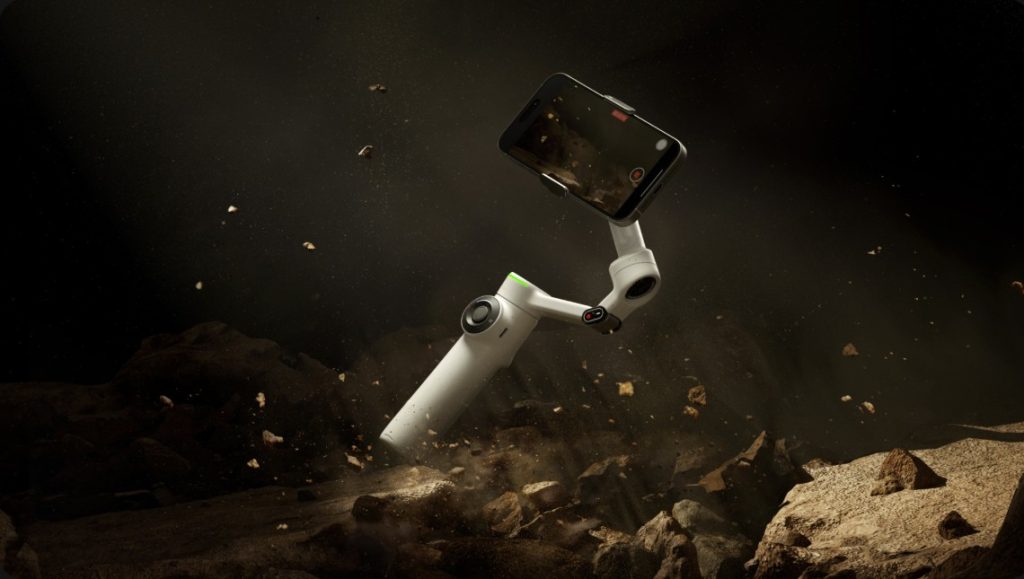Capturing smooth, cinematic shots in extreme outdoor conditions can be a challenge, but a gimbal can be your best ally. Whether you’re battling strong winds, freezing temperatures, or rugged terrain, knowing how to use your gimbal effectively is key to preserving your equipment and achieving stunning footage.
Understanding Extreme Outdoor Conditions
Harsh outdoor settings test both durability and technique, affecting how you use your gimbal. High winds can destabilize your shots and reduce overall control. Freezing temperatures may impact gimbal motors or affect battery life.
Altitude also influences performance. Lower air pressure at high elevations can strain equipment, while sandy environments risk clogging moving parts. For instance, desert shoots might introduce fine particles into motor joints.
Rain or snow introduces moisture that can hinder electronics. Rapid weather changes such as shifting temperatures or unpredictable storms demand adaptable shooting strategies.
Consider how light interacts with different landscapes. Bright sunlight in snow-covered areas reflects more intensely, potentially causing overexposure. Dense forest canopies reduce light levels, requiring adjustments to avoid motion blur.
Anticipate uneven terrains that challenge stability. Rocky trails or muddy paths test your balance, making gimbal usage harder. Understand these factors to prepare for controlled, steady footage under difficult conditions.
Preparing Your Gimbal for Harsh Environments
Choose a gimbal built for challenging outdoor settings. Action camera models like Insta360 Flow 2 Pro, which feature weather-sealing, durable materials such as magnesium alloy or reinforced plastic, and high-torque motors, maintain stability even in strong winds or moist conditions. A manual balance adjustment option also offers extra reliability if electronic components falter.
Weatherproofing Your Equipment
Use protective equipment like rain covers to shield against moisture. For emergencies, a simple plastic bag fastened tightly can serve as temporary protection. Ensure your gimbal includes sealed components to safeguard against rust and debris. For sandy or dusty areas, look for fine-mesh filters in the ventilation areas to minimize infiltration. Inspect all seals regularly, and lubricate parts as required to retain functionality.
Checking Battery Life and Power Sources
Cold weather reduces battery efficiency. Use models with interchangeable batteries or power banks compatible with low temperatures. Carry pre-charged spares, storing them in warm clothing pockets to slow power drain. Test the battery endurance of your gimbal before heading into extended outdoor shoots.
Packing Essential Accessories
Secure your gimbal in a waterproof bag or case for safe transport. Pack small tools for adjustments, additional cleaning supplies like cloths, and ziplock bags to manage condensation during temperature shifts. Include traction aids when moving across slippery or uneven ground to maintain stability and prevent accidental damage to your equipment.
Techniques for Optimizing Stability
Extreme outdoor conditions challenge stability, making it essential to prepare your gimbal for consistent performance. By focusing on precise adjustments and response to environmental factors, you can maintain steadier footage.
Balancing Your Gimbal Properly
Balance the camera carefully before powering on the gimbal. Correct weight distribution minimizes strain on motors, especially in windy or uneven terrains.
Securely mount your equipment to prevent positional shifts caused by movement or environmental pressure. Regularly check the alignment to handle vibrations during use.
Avoid overtightening components, which could restrict motion, and use available measurement tools for enhanced accuracy.
Adjusting Settings for Wind and Movement
Select high-torque motor settings to counter wind interference. These settings enable the gimbal to resist external forces and maintain stability.
Utilize appropriate modes like pan follow or lock, adjusting to the environment’s movement level. Experiment with slower adjustment speeds for smoother transitions.
Carry extra power sources suited for temperature variations, as performance can drop in cold or hot conditions. Protect the gimbal from elements like dust or moisture to sustain functionality outdoors.
Protecting Your Gimbal in Extreme Weather
Guarding your gimbal from harsh weather ensures better functionality and longer lifespan during outdoor shoots. Choosing durable and weather-resistant features helps it endure challenging environments.
Dealing with Rain and Moisture
Select gimbals with sealed components and electronics to prevent water damage. Models with IP ratings, such as IP65, protect against mild rain and splashes.
Rain covers or waterproof cases shield sensitive parts during downpours. Inspect port seals after exposure to dampness, as weak covers promote corrosion over time. Use protective accessories in unpredictable weather.
Coping with Dust and Sand
Look for gimbals equipped with fine-mesh dust filters in ventilation areas, maintaining airflow while blocking debris. Clearing ports and seals prevents sand accumulation and eventual damage.
Avoid operating gimbals constructed with porous materials or weak seals in environments prone to dust storms or sandy terrain. Focus on regular inspections to sustain motor reliability.
Managing Cold and Heat Exposure
Cold impacts battery efficiency, draining power faster and stiffening motor functions. Swappable batteries rated for low temperatures or external batteries offer operational flexibility in frosty conditions.
Excessive heat risks overheating and material warping. Choose gimbals with high thermal tolerance and manually balance the device when high temperatures risk system failure. Balance remains critical after electronics shut down.
Maintaining Your Gimbal After Use
Cleaning and Storage
Wipe motors, arms, and joints with a soft, lint-free cloth after every use. Tighten loose screws to maintain performeance and reduce wear. If you’re using devices like Insta360, always store your gimbal in a protective case to guard against moisture and accidental damage.
Service and Maintenance
Schedule a full maintenance check at least once annually or immediately post-exposure to extreme conditions. Update the firmware regularly to access improvements and fix potential software bugs.
Battery Care
Keep batteries charged between uses to avoid power depletion over time. Test their capacity every few months to identify degrading cells. Store them in a dry, temperature-controlled environment to maintain their longevity.
Conclusion
Mastering the use of a gimbal in extreme outdoor conditions requires preparation, adaptability, and consistent care. By investing in durable, weather-resistant equipment and implementing proactive maintenance, you can protect your gear and capture stunning, stable footage even in challenging environments.
Don’t underestimate the value of proper planning and the right accessories to tackle unpredictable weather and tough terrains. With the right techniques and tools, you can elevate your filmmaking while ensuring your gimbal performs reliably for years to come.
Sandra Larson is a writer with the personal blog at ElizabethanAuthor and an academic coach for students. Her main sphere of professional interest is the connection between AI and modern study techniques. Sandra believes that digital tools are a way to a better future in the education system.



![‘Bugonia’ Review – Lanthimos Shoots For Brilliance With Emma Stone & Jesse Plemons In A Madcap World Gone Wrong [Telluride 2025] ‘Bugonia’ Review – Lanthimos Shoots For Brilliance With Emma Stone & Jesse Plemons In A Madcap World Gone Wrong [Telluride 2025]](https://cdn.geekvibesnation.com/wp-media-folder-geek-vibes-nation/wp-content/uploads/2025/09/Emma_Stone_Bugonia-450x253.avif)


